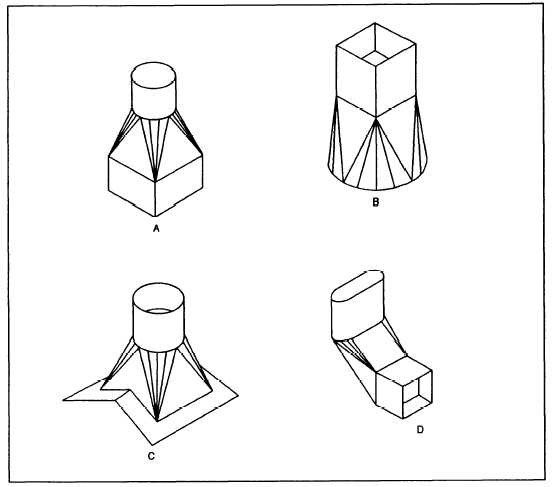Figure 8-17.—Transition pieces.
are not shown in either the top or front view, but
would be equal in length to the hypotenuse of a
right triangle, having one leg equal in length to the
projected element in the top view and the other leg
equal to the height of the projected element in the
front view.
When it is necessary to find the true length of
a number of edges, or elements, then a true-length
diagram is drawn adjacent to the front view. This
prevents the front view from being cluttered with
lines.
Since the development of the oblique cone will be
symmetrical, the starting line will be element 0-7. The
development is constructed as follows: With 0 as center
and the radius equal to the true length of element 0-6,
draw an arc. With 7 as center and the radius equal to
distance 6-7 in the top view, draw a second arc
intersecting the first at point 6. Draw element 0-6 on the
development. With 0 as center and the radius equal to
8-13
the true length of element 0-5, draw an arc. With 6 as
center and the radius equal to distance 5-6 in the top
view, draw a second arc intersecting the fast point 5.
Draw element 0-5 on the development. This is repeated
until all the element lines are located on the development
view. This development does not show a seam
allowance.
DEVELOPMENT OF TRANSITION PIECES
Transition pieces are usually made to connect
two different forms, such as round pipes to square
pipes. These transition pieces will usually fit the
definition of a nondevelopable surface that must be
developed by approximation. This is done by
assuming the surface to be made from a series of
triangular surfaces laid side-by-side to form the
development. This form of development is known
as triangulation (fig. 8-17).


